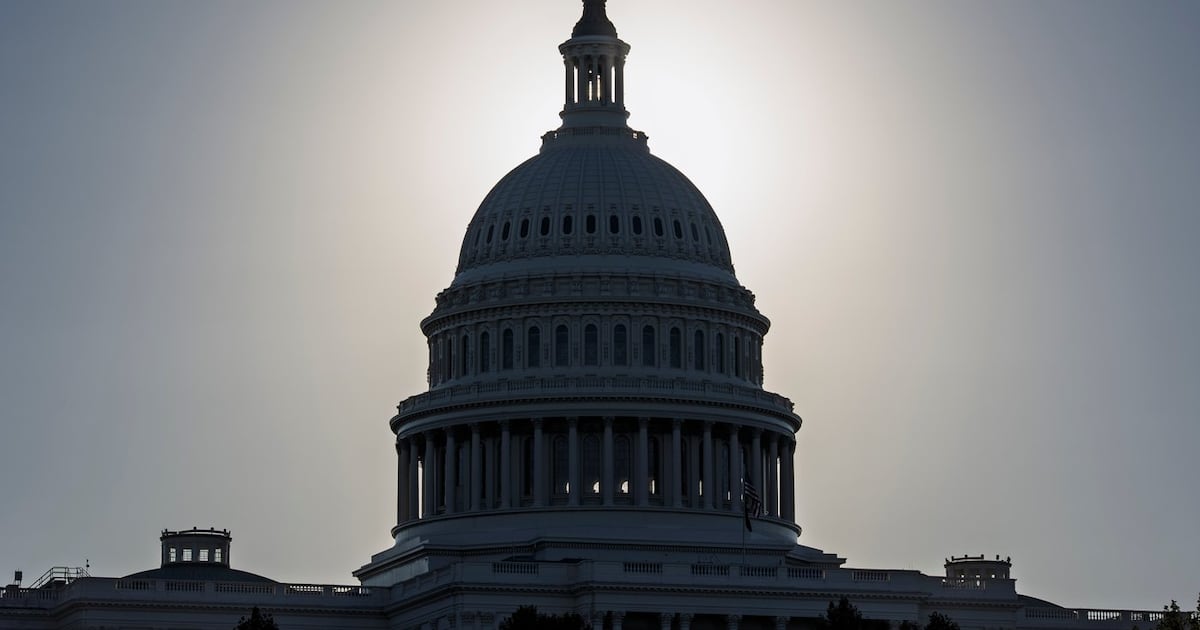Top Stories
U.S. Shutdown Hits Critical Point as 4,000 Workers Face Layoffs

UPDATE: The U.S. government shutdown has escalated dramatically, with 4,000 federal workers receiving layoff notices just days ago. This shutdown, now entering its third week, is putting immense pressure on essential services and federal employees, with no end in sight.
Tensions are boiling over as both Republicans and Democrats grow increasingly hostile. The shutdown has already led to the closure of iconic locations like the Smithsonian museums and the National Zoo, and is causing strain on the nation’s air traffic control system. The urgency of the situation is palpable, as hundreds of thousands of federal workers face uncertainty about their jobs and livelihoods.
On Friday night, the Trump administration made a shocking move, laying off hundreds of bureaucrats in an apparent attempt to shift blame onto Democrats. The administration’s actions have been widely criticized, with Arizona Senator Mark Kelly calling it an unprecedented move that harms families dependent on federal jobs. “These are people with families… They have to put food on the table,” Kelly stated during an interview on CNN.
Despite the urgency of the situation, neither party has made significant progress toward resolving the deadlock. Senate Democrats are standing firm, refusing to support a short-term funding bill without assurances that Affordable Care Act subsidies will be extended, while Republicans insist the government must reopen first. The lack of trust between the two parties complicates matters further, as many believe the government shutdown is a tactical play rather than a genuine effort to reach an agreement.
In a twist, the Pentagon has repurposed research funding to ensure military personnel will receive their paychecks, a move that may alleviate some pressure but also shifts focus away from the plight of federal workers. While President Trump’s action to protect military paychecks is commendable, it also highlights the disconnect between military needs and civilian government employment.
As the crisis deepens, official sources report that the ongoing shutdown is not dominating national discourse, with many voters seemingly resigned to the dysfunction in Congress. Polls indicate that more Americans currently blame Republicans for the stalemate, but neither party has successfully pinned the blame squarely on the other.
This week, two major developments could influence the negotiation landscape. The administration’s abrupt layoff notices have sparked outrage among Democrats, who are now under pressure to reassess their stance. Additionally, as public health crises loom, the layoffs have raised concerns over the capacity of agencies like the Centers for Disease Control and Prevention (CDC) to respond effectively.
Amidst the chaos, House Speaker Mike Johnson has faced scrutiny for not recalling the House to address the shutdown, accusing Democrats of using the situation for political leverage. The internal divisions within the Republican Party are also becoming apparent, with members like Georgia Rep. Marjorie Taylor Greene expressing concerns over soaring health insurance premiums.
As the impasse continues, both sides are engaged in a blame game, with little indication of a breakthrough. The emotional toll on federal workers and their families is escalating, and the public is left wondering when a solution will emerge.
The coming days are critical, as lawmakers must confront the reality that the longer they remain at an impasse, the greater the suffering for those affected. The potential to end the shutdown hangs in the balance, contingent on whether either party is willing to prioritize the needs of the American people over political posturing.
Stay tuned for updates as this urgent situation develops.
-

 Politics4 weeks ago
Politics4 weeks agoSecwepemc First Nation Seeks Aboriginal Title Over Kamloops Area
-

 World5 months ago
World5 months agoScientists Unearth Ancient Antarctic Ice to Unlock Climate Secrets
-

 Entertainment5 months ago
Entertainment5 months agoTrump and McCormick to Announce $70 Billion Energy Investments
-

 Science5 months ago
Science5 months agoFour Astronauts Return to Earth After International Space Station Mission
-

 Lifestyle5 months ago
Lifestyle5 months agoTransLink Launches Food Truck Program to Boost Revenue in Vancouver
-

 Technology3 months ago
Technology3 months agoApple Notes Enhances Functionality with Markdown Support in macOS 26
-

 Lifestyle3 months ago
Lifestyle3 months agoManitoba’s Burger Champion Shines Again Amid Dining Innovations
-

 Top Stories2 months ago
Top Stories2 months agoUrgent Update: Fatal Crash on Highway 99 Claims Life of Pitt Meadows Man
-

 Politics4 months ago
Politics4 months agoUkrainian Tennis Star Elina Svitolina Faces Death Threats Online
-

 Sports5 months ago
Sports5 months agoSearch Underway for Missing Hunter Amid Hokkaido Bear Emergency
-

 Politics5 months ago
Politics5 months agoCarney Engages First Nations Leaders at Development Law Summit
-

 Technology5 months ago
Technology5 months agoFrosthaven Launches Early Access on July 31, 2025





















